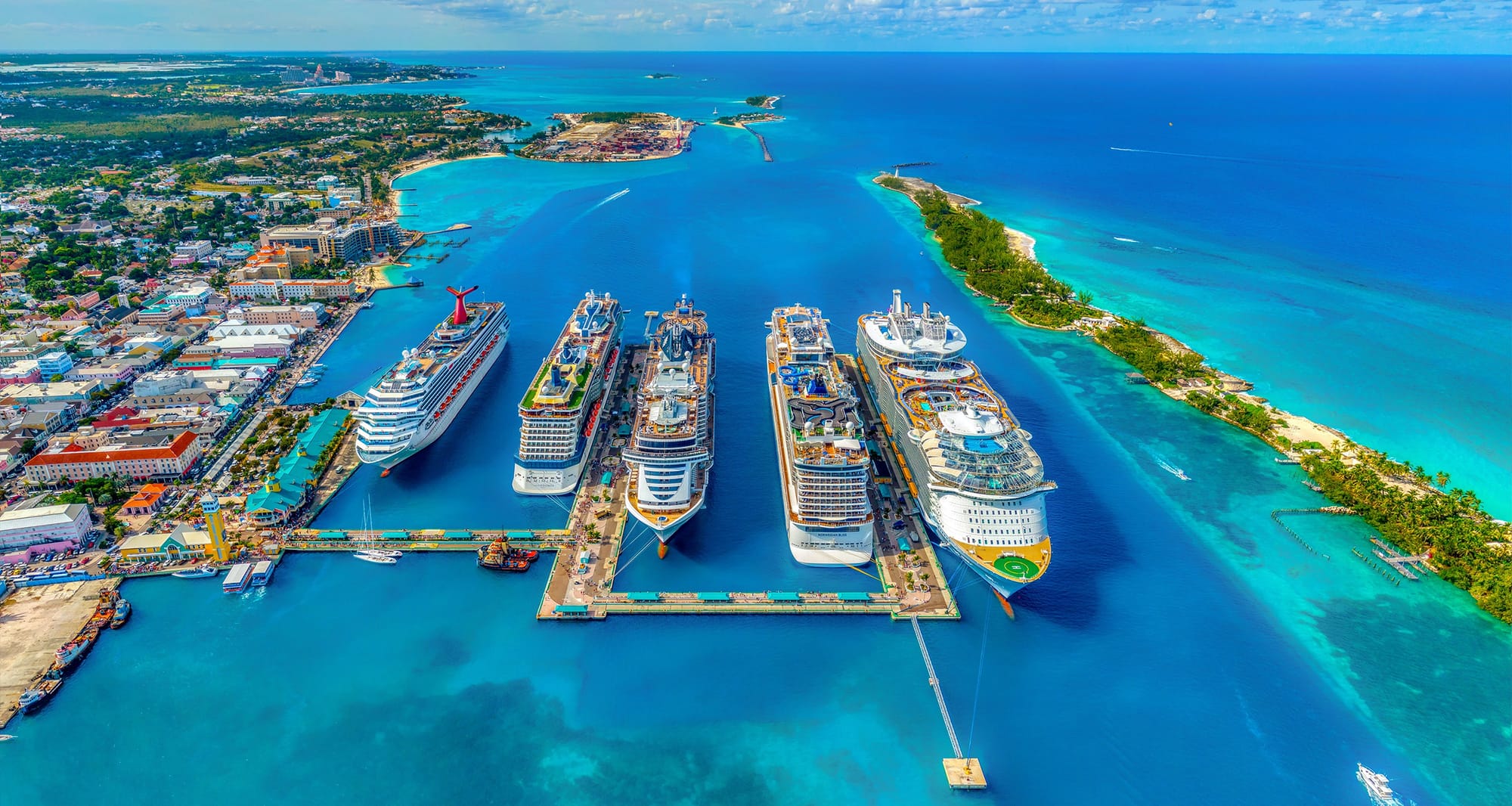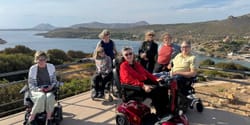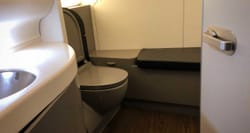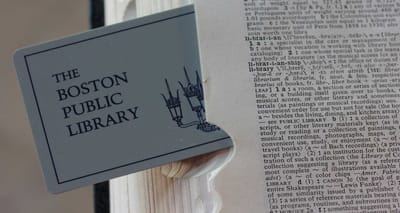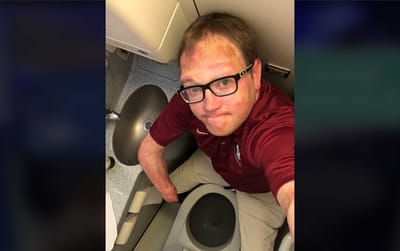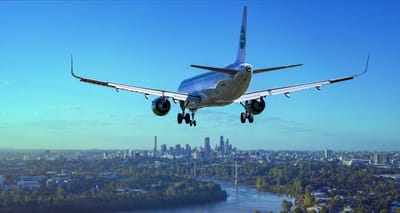Living with a disability presents a lot of obstacles, but a cruise doesn’t have to be one of them. I have cruised for more than forty years: twenty-five years ago, I was diagnosed with multiple sclerosis, after which I began to notice obstacles that I hadn’t encountered before but with a little forethought cruising is still my first choice for a stress-free holiday.
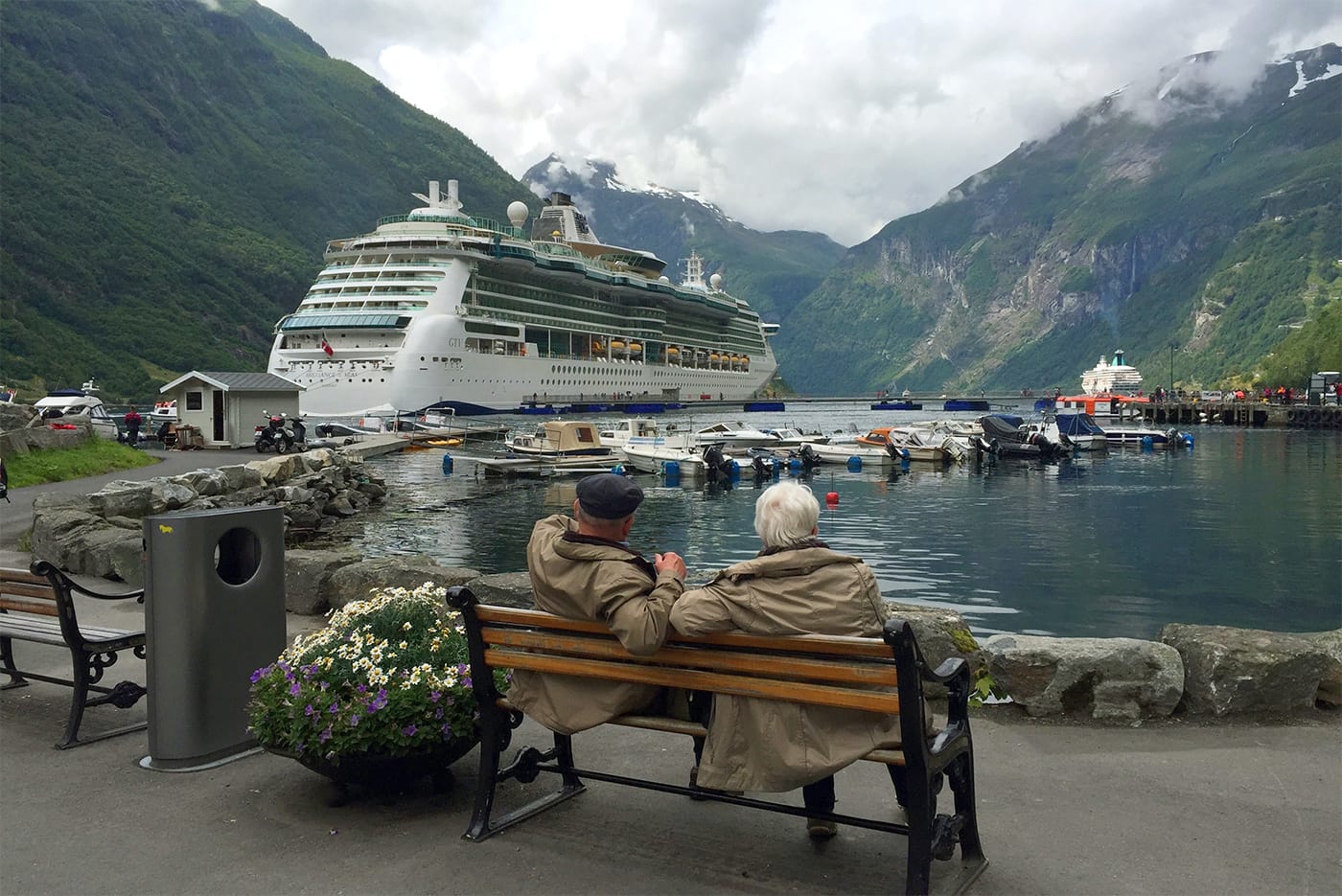
When planning a cruise, the most important consideration is ship choice especially for those that are permanent wheelchair users. The larger ships tend to have wider gangways and some like AIDA have a rollator that enables easy access. That might seem obvious but I saw one poor couple left behind at Rosyth as they couldn’t navigate the wheelchair up the stepped narrow gangway.
Top Tip: River and expedition cruises are not best-suited for wheelchair users.
Choosing the right cabin is imperative, preferably one that has electronic doors, 360 degree turning angles, ramped access to the bathroom, roll-in showers and lower closet rods. Some might not know that because of health and safely chairs are you are not allowed to be left in the corridors. If you haven’t booked an appropriate cabin for your equipment, it will be refused on embarkation. If you book a balcony ensure it is large enough for you and your mobility aid as some quite literally have space for two chairs and little else.
Top Tip: Wheelchair-accessible cabins are limited so book well in advance especially if wanting to travel over half-term or holiday periods.
Some lines offer automatic deck doors, accessible restrooms, designated theatre and restaurant seating for wheelchair users, and lower gaming tables in the casino. Quite a few ships now incorporate swimming pool and whirlpool hoists but times are only available upon request.
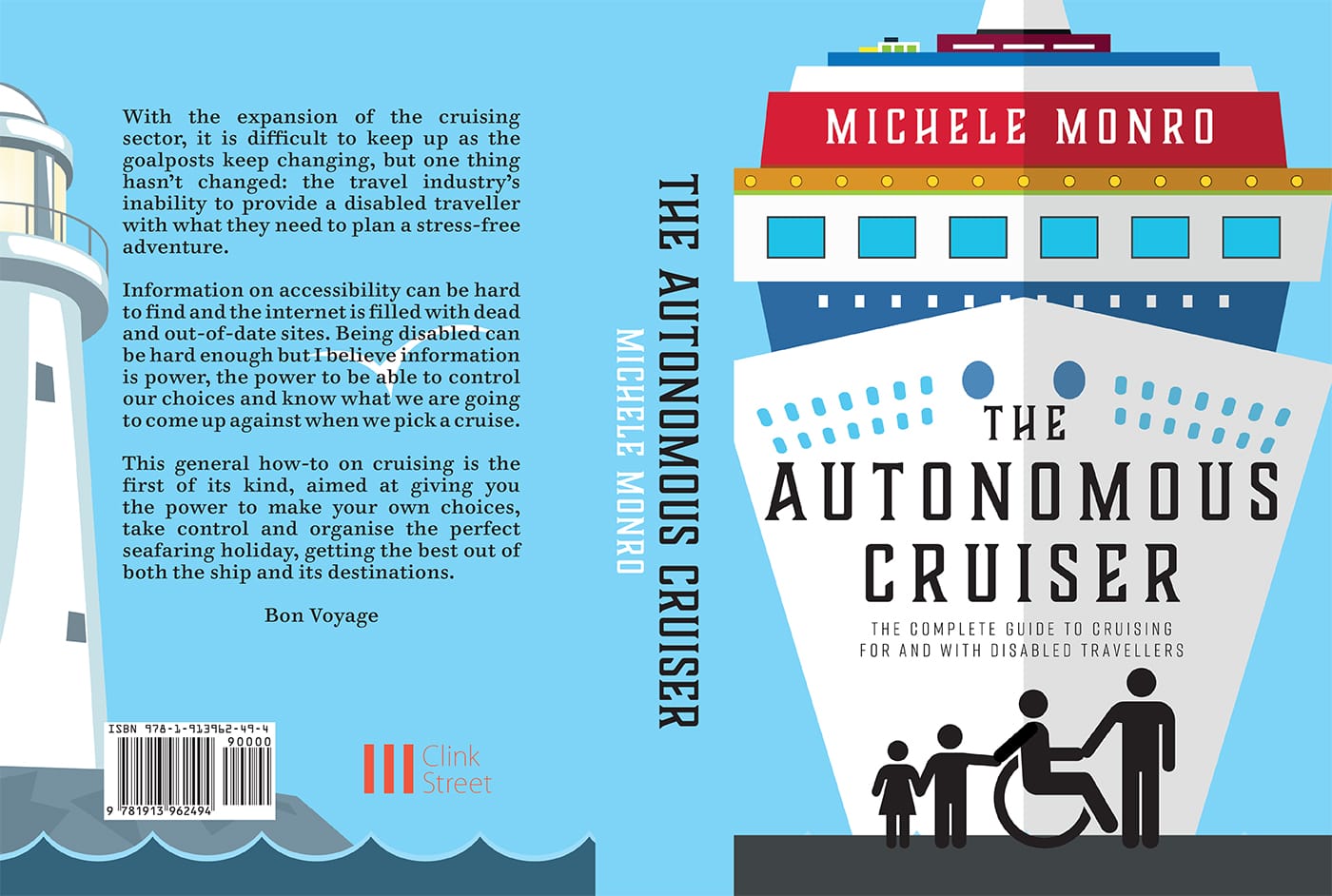
If you are booking a fly-cruise, make sure you request a bulkhead seat and take a spare carry-on bag to store any removable parts of your wheelchair like footrests, joystick, headrest or battery and make sure you have disconnected the cells. The less equipment that goes in the hold the less likely it is to get damaged. Make sure to laminate instructions on how to operate your chair and ensure it is secured to your chair. Take a photograph of your equipment before leaving home to prove any damage incurred is of the airline’s making and file a report as soon as you disembark. Legally the airline is required to fix your wheelchair or offer a replacement but unfortunately it may not match the standards of your own chair.
Airline Tip: If you have booked your air tickets on a third-party site like Expedia, they might not offer an option to select assistance. Make sure you contact the airline to request this.
Service Animals: All airlines and cruise ships are required to allow guide dogs to travel with you free of charge. Make sure you carry the required paperwork and make sure you contact the airline and cruise line to inform them you are travelling with your sight-seeing friend so they can be prepared for your arrival.
Once you are ready to book, contact the cruise line’s Special Needs Department for special requests, pier assistance and accessible tour excursions advice.
You don’t have to lug all your equipment with you. Companies like ‘Mobility at Sea’, ‘Special Needs at Sea’ or ‘Scootaround’ will take care of everything, whether oxygen, bed hoist, raised toilet seat, powerchair, scooter or walker, the leaders in worldwide mobility rental devices will make sure you have everything you need waiting in your cabin on arrival.
Insurance Tip: Remember to take out equipment insurance, as a replacement or repair could be costly.
If you are carrying your own equipment, make sure it is well-labelled to avoid confusion of ownership. Ask for an orientation tour once embarked and make a note of where the accessible restrooms are located, where your dinner table is, and where the reserved theatre seating is located.
Some ports have extremely long piers or ship-to-shore walkways which can tire out the fittest of the fit and although a powerchair gives you the freedom to get off without worrying whether you will be able to cope with the distance, it is easy to underestimate the battery usage so make sure it is fully charged before leaving the ship.
Make sure your electrical mobility aids are compatible with the voltage on the ship and that you pack a 2 or 4 gang extension lead as most cabins only have one plug socket. Always take copies of your prescription medication with you and carry extra in case of delays. It is prudent to ask your doctor for the generic names as certain overseas pharmacies might not recognise your medicine.
Repair Kit Tip: Always carry an emergency repair kit, spare inner tubes, tyre repair patches, a Phillips screwdriver, hex wrench, or air pump could come in handy.
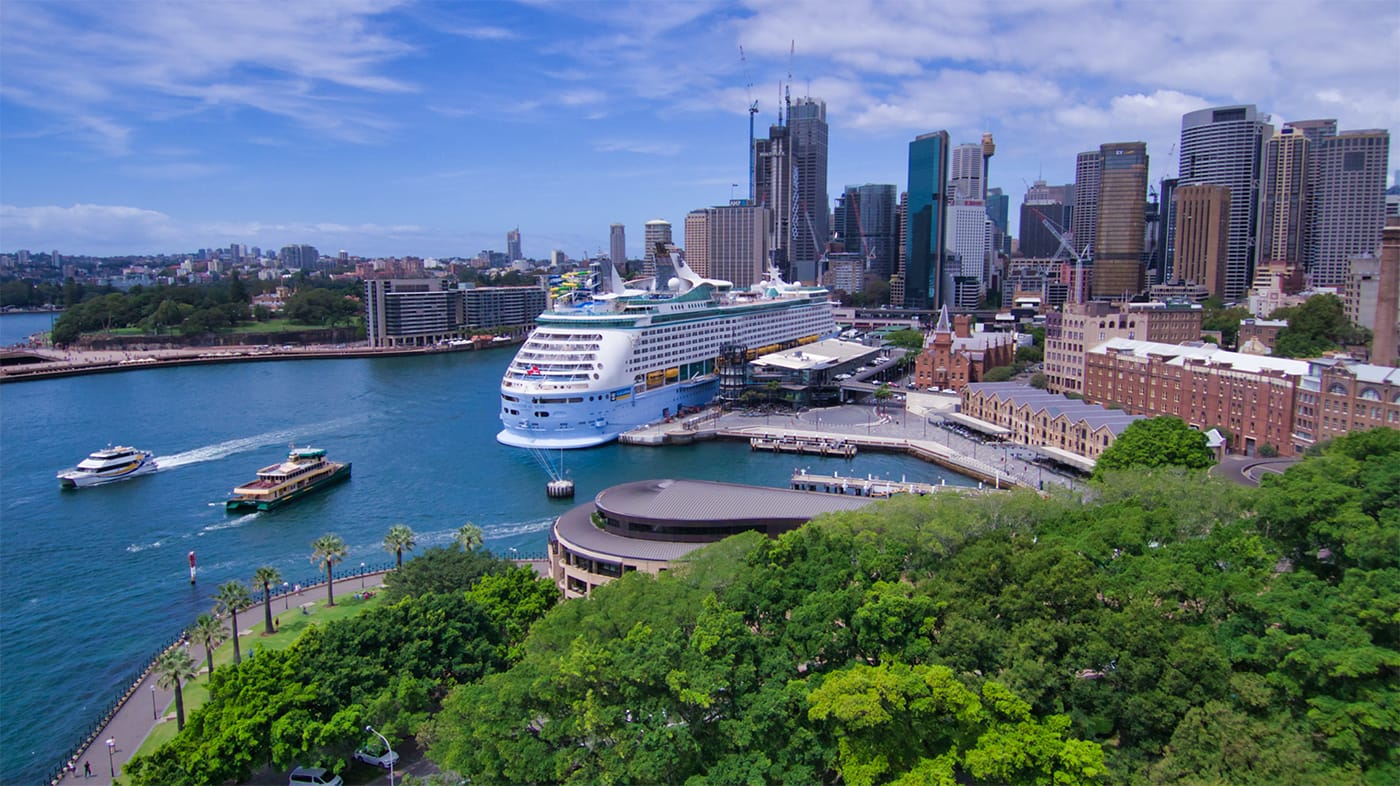
Select your destinations carefully and avoid tender ports whenever possible as most would-be passengers don’t realise that if you are a permanent wheelchair user you cannot get off the ship if you have to tender ashore (tending is used when the ship anchors at sea and small boats ferry passengers across). There are a few exceptions where state of the art multi-million-pound new builds have incorporated equipment that enables a wheelchair user to use the tender, notably Celebrity’s ‘Magic Carpet’ on Edge and Apex. Princess Cruises have an accessible tender on some of their ships and Holland America’s scissor lift transports a wheelchair user down the gangway and onto the tender. Once dockside, the tender uses a hydraulic levelling system to adjust to the height between the dock and the tender allowing the wheelchair to be rolled off safely.
Equipment Tip: Bear in mind that most cruise lines have a weight restriction on chairs that want to use the tender service.
Snow Advice: If booked to a destination like Norway, take wheelchair snow tyres that will make traversing the pavements much easier when in port. Carry a poncho or similar to cover your wheelchair battery to keep it dry.
One area that ships are lacking in are the amount of accessible tours on offer in ports of call. Some lines have a good selection like Celebrity whose coaches have lift access, MSC cover 20 destinations, while Silversea actually partner with Accessible Travel Solutions who specialise in land-based excursions for those with special needs. Goole search external shore excursions, there are several local companies that have great options. Sage Traveling, owned and run by John Sage a wheelchair user himself, knows first-hand what needs to be included in a wheelchair-friendly port outing.
Be Careful: Even if a ship’s excursion is billed as wheelchair-friendly, in some cases they will store your chair in the hold but expect you to be able to manage the bus/coach steps on your own.
Some of the cruise line’s private islands have accessible landing quays, beach wheelchairs and adapted bathroom facilities. In fact, overall cruising has become very accessible friendly and you will have a marvellous time if you do your research and select the ship and ports of call that suits your special needs best.
The Autonomous Cruiser is now out in paperback and eBook.
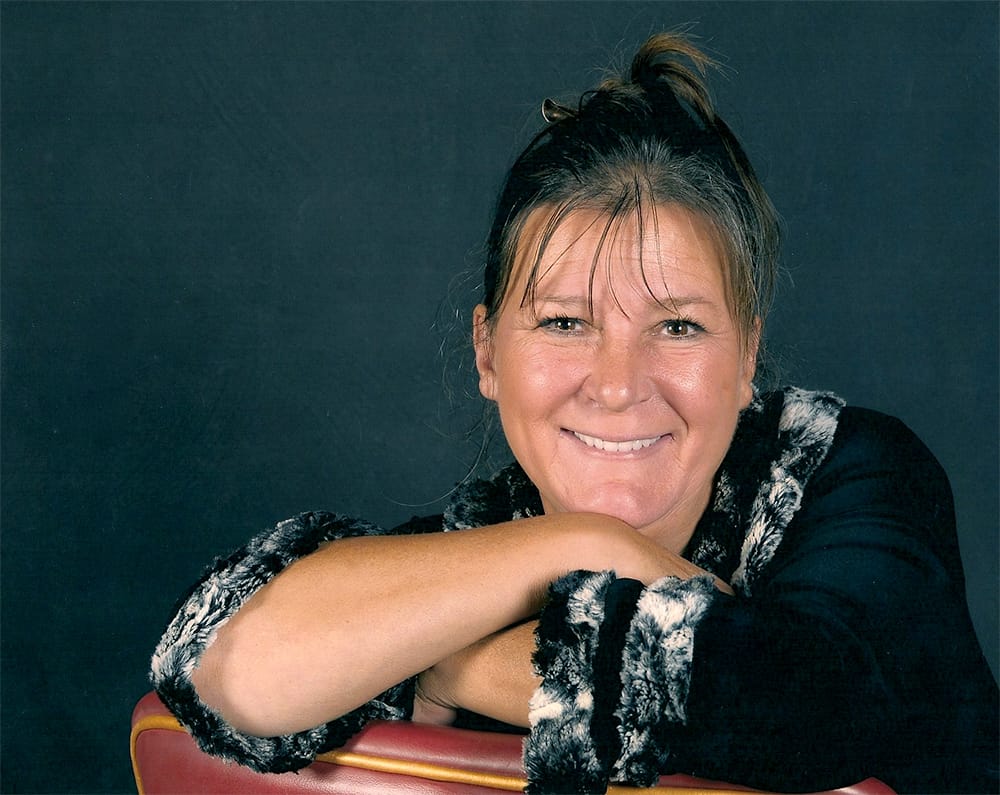
About the author: Michele Monro is the daughter of much-loved singer Matt Monro. She is the author of the internationally bestselling biography of his life The Singers Singer: The Life And Music Of Matt Monro, and released a brand-new album of her father’s work, Stranger in Paradise: The Lost New York Sessions in 2020, which went straight to the No. 8 spot in the official album charts and stayed in the charts for six months.
Michele is a special interest speaker for several cruise lines including Celebrity, P&O, Princess Cruises, Cunard, Cruise and Maritime, Fred Olsen and Royal Caribbean. She is also writing a series of cruise port guides for disabled passengers to complement The Autonomous Cruiser. When she isn’t cruising, Michele lives in Shropshire.


